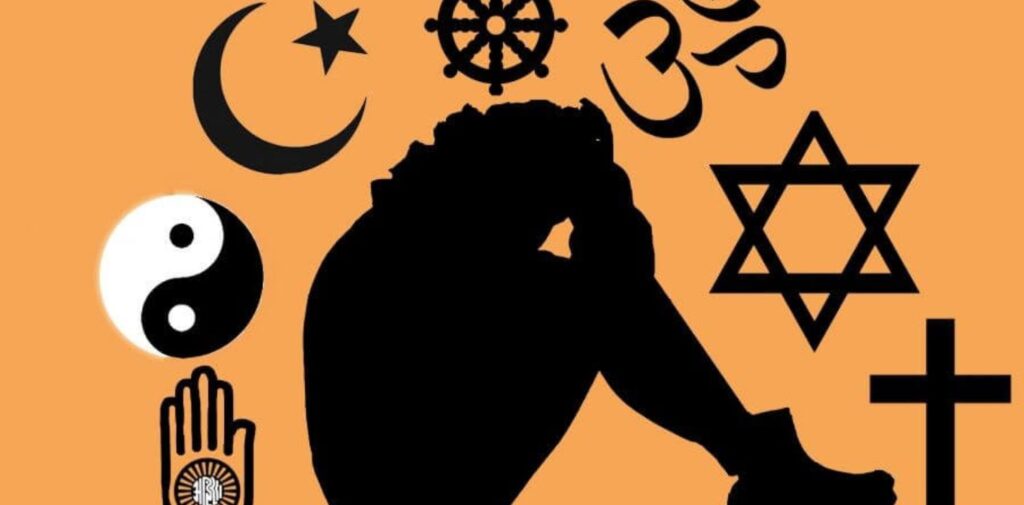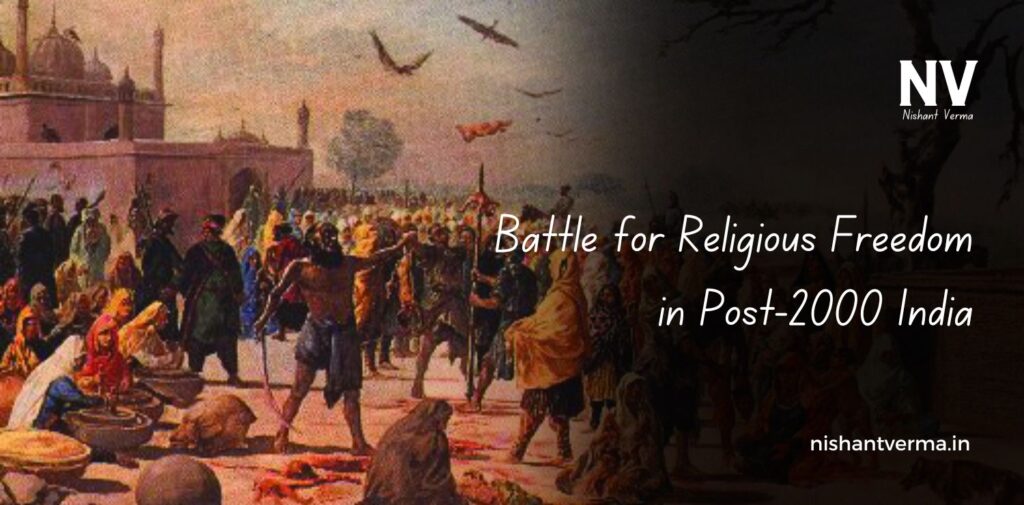India, known for its rich cultural diversity and secular constitution, has seen various changes in its approach to religious freedom in the 21st century. The battle for religious freedom has become more pronounced post-2000 due to a mix of political, social, and legal challenges. While the Indian Constitution guarantees the right to religious freedom, tensions have risen in recent decades, often resulting in heated debates and conflicts. This article explores how religious freedom has evolved in India since 2000, the challenges faced, and the ongoing efforts to ensure this fundamental right remains intact for all citizens.
The Constitutional Foundation of Religious Freedom
The Indian Constitution, adopted in 1950, enshrines the right to religious freedom as one of its core values. Article 25 of the Constitution guarantees individuals the freedom to practice, propagate, and profess their religion. It ensures that all citizens, regardless of their religious background, are entitled to the same rights and protections under the law. The Constitution is clear in its commitment to secularism, aiming to provide a framework where no religion is given preferential treatment by the state.
Despite this strong legal foundation, the reality of religious freedom in India has often been a subject of debate. Since the year 2000, the tension between religious groups has heightened, especially with the rise of political movements and social changes. As India continues to evolve, the application of these constitutional principles has come under scrutiny, raising questions about the extent to which religious freedom is truly respected in modern-day India.

Rising Religious Intolerance and Polarization
In the years following 2000, India has witnessed a rise in religious intolerance, particularly against religious minorities. Hindu-Muslim relations, in particular, have become a focal point of contention. Religious polarization, fueled by extremist elements, has led to several incidents of communal violence, creating deep divides in society.
One of the most notable events in this context was the 2002 Gujarat riots, which involved violent clashes between Hindus and Muslims, leading to the deaths of over 1,000 people, mostly from the Muslim community. While the state and central government condemned the violence, the aftermath highlighted the deep-rooted religious tensions in India. The incident sparked debates about the role of the state in managing religious conflicts and whether enough was being done to protect religious minorities.
In subsequent years, other incidents of religious violence, such as the 2008 Mumbai terror attacks and ongoing clashes between different religious communities in various states, have added to the growing concerns about religious freedom. Political leaders and parties have sometimes been accused of using religion as a tool to garner votes, further deepening the divisions in Indian society.

Religious Conversion and Anti-Conversion Laws
One of the most debated issues regarding religious freedom in India is religious conversion. Conversions, especially from Hinduism to Christianity or Islam, have often sparked controversy. Religious conversion, while legal, has been a subject of tension between religious communities. The issue gained prominence in the 2000s with allegations of “forced conversions” being made against certain groups, particularly in tribal regions.
In response to these concerns, several states introduced anti-conversion laws, arguing that forced conversions were undermining religious harmony. These laws require individuals to notify authorities before converting to a different religion, which some believe infringes on the personal freedom to choose one’s religion. Critics argue that these laws are often misused to target minority communities and prevent religious freedom.
For instance, the state of Orissa (now Odisha) enacted the Orissa Freedom of Religion Act in 1967, followed by similar laws in other states like Gujarat, Madhya Pradesh, and Himachal Pradesh. These laws often criminalize forced conversions but have been criticized for creating an atmosphere of suspicion and fear, particularly against Christians and Muslims. These legal battles continue to raise important questions about the right to practice one’s faith freely without fear of state interference.
Freedom of Expression and Religious Sensitivity
Another challenge to religious freedom in post-2000 India has been the issue of freedom of expression. In a country where multiple religions coexist, discussions on religious matters can easily lead to conflicts. Over the years, there have been increasing instances where freedom of speech has been curtailed due to sensitivities around religion.
For example, the publication of books, films, and works of art that touch on sensitive religious topics has often led to protests and violence. A notable instance was the ban on Salman Rushdie’s book “The Satanic Verses” in the 1980s, which sparked violent protests among Muslim groups. Since then, there have been numerous incidents where books or films with religious themes have been banned or censored.
Similarly, social media platforms have become battlegrounds for debates on religion. While these platforms provide people with the freedom to express their opinions, they have also become sources of communal hate speech and propaganda. Politicians, celebrities, and common citizens alike have used social media to express their religious views, often leading to polarization and religious intolerance. The challenge remains in balancing the right to free expression with the need to maintain religious harmony and public order.
The Role of Secularism in India’s Religious Landscape
Secularism has been one of the core principles of the Indian state since its inception. However, post-2000, the rise of religious nationalism has posed a serious challenge to secularism in India. Some political parties, particularly those with Hindu nationalist leanings, have increasingly promoted the idea of India as a Hindu nation, often sidelining the needs and rights of religious minorities.
For instance, the Bharatiya Janata Party (BJP), which has been in power since 2014, has been accused by critics of promoting policies that favor the Hindu majority, while sidelining the interests of Muslims, Christians, and other minorities. These policies include the controversial Citizenship Amendment Act (CAA) passed in 2019, which grants citizenship to non-Muslim refugees from Pakistan, Afghanistan, and Bangladesh. Critics argue that this law discriminates against Muslims and undermines the secular fabric of the country.
The rise of religious nationalism has led to questions about whether India can maintain its secular identity. While India continues to remain a secular country under its constitution, the growing influence of religion in politics and public life raises concerns about the future of religious freedom for all citizens.

Efforts to Strengthen Religious Freedom and Tolerance
Despite the challenges to religious freedom, there have been several efforts to promote religious tolerance and protect the rights of religious minorities. Civil society organizations, religious leaders, and activists have worked tirelessly to address the issues of discrimination and violence based on religion.
One of the most notable efforts to promote religious tolerance has been the role of interfaith dialogue. Religious leaders from different communities have come together to discuss ways to foster peace and understanding. These dialogues have helped bridge the gap between different religious groups and encouraged cooperation and mutual respect.
The Indian judiciary has also played a crucial role in defending religious freedom. Several landmark court cases have upheld the rights of individuals to practice their religion freely. For instance, the Supreme Court’s verdict in the Shah Bano case in the 1980s, which dealt with Muslim women’s right to alimony, and the recent judgment in the Sabarimala case in 2018, which allowed women of menstruating age to enter the Sabarimala temple, have reinforced the importance of upholding constitutional rights over religious practices.
In addition, the growing awareness and education about secularism and religious freedom have contributed to a more inclusive society. Awareness campaigns, media coverage, and social initiatives aimed at promoting harmony among different religious communities have slowly begun to change public perception and increase tolerance.
Conclusion: Battle for Religious Freedom
The battle for religious freedom in post-2000 India has been marked by both progress and challenges. While the country continues to uphold religious freedom as a constitutional right, growing intolerance and religious polarization have created significant obstacles. The rise of religious nationalism, coupled with incidents of religious violence and discrimination, has led to debates about the future of religious freedom in India.
However, despite these challenges, there are numerous efforts underway to strengthen religious tolerance and ensure that the fundamental rights of all citizens are protected. Interfaith dialogue, judicial intervention, and civil society activism play a vital role in creating a society where people of all religions can live peacefully and practice their faith without fear. The battle for religious freedom in India is ongoing, and the future will depend on how well the country can balance its diverse religious identities while preserving its secular ideals.




